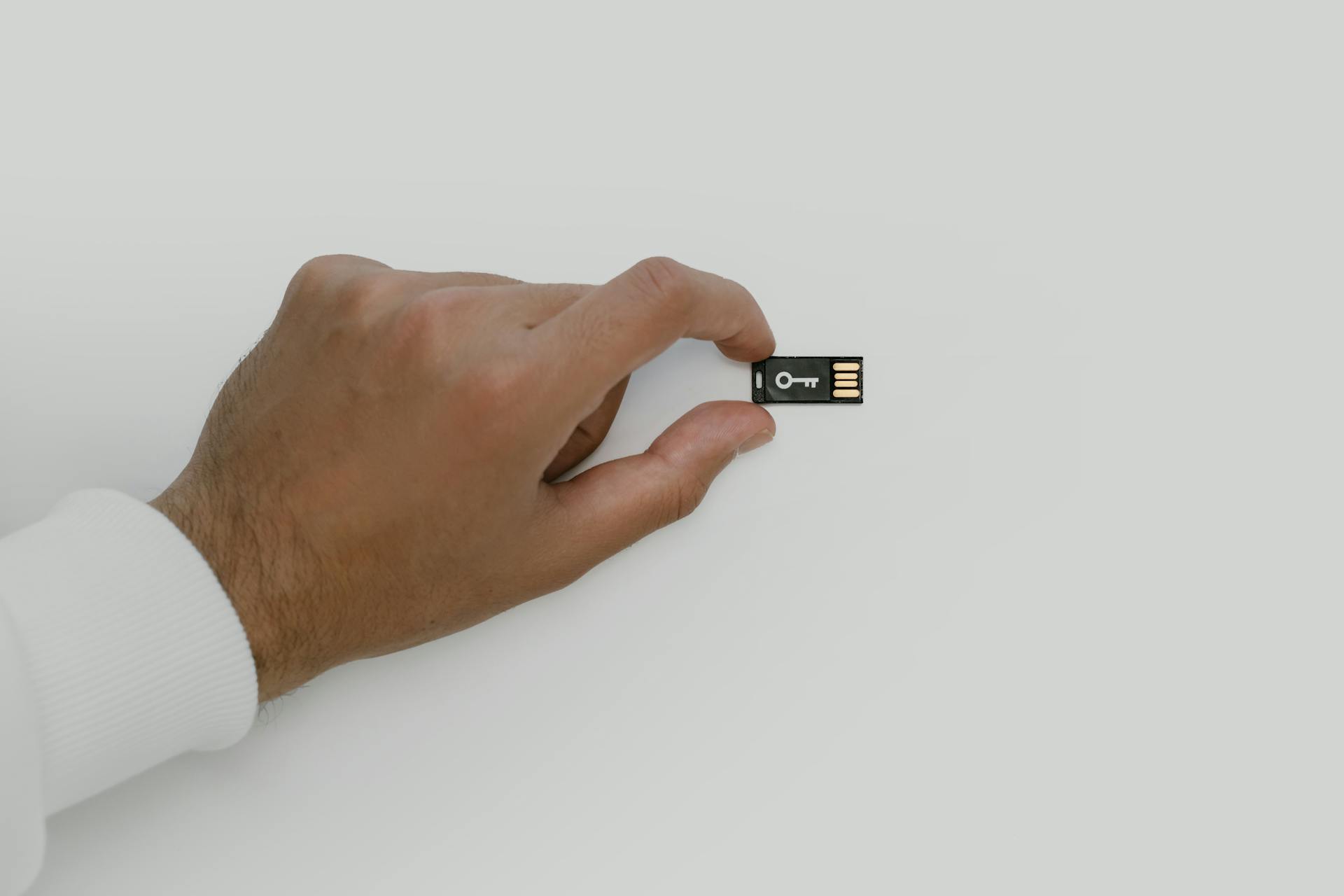
Discover how Operator Display Integrated Network (ODIN) can smooth out the wrinkles in a building management system (BMS). The software finally makes it possible to take your building with you, no matter where you go. From standard metrics to emergency alerts, explore the features and functions of a truly remote building automation solution that helps you see what’s happening while you’re gone — and even fix problems without needing to travel on-site. ODIN can be the key to improving oversight while still leaving you enough time to take on new projects.
Table of Contents
- Entering the Future: How the ODIN Remote BAS Works
- Remote Functions in a Cloud-Based App
- Building Analytics Tools Are Only as Good as Your Data
- Don’t Sleep on Security for Building Management Systems
- 5 Advantages of a Remote Building Management System
- Learn More About ODIN Remote Building Management
The Future of Building Systems Management

In this post-pandemic, technology-immersed world, BAS functionality expectations have changed. Service providers specializing in building controls and facility managers alike are looking to modern BAS design for simplicity, data-driven insights, and optimal resource utilization. According to a pulse check of the European market (which often portends what will happen in the United States), the factors driving growth in the BAS market are “increasing awareness about energy conservation, government initiatives promoting sustainable practices, and the rising demand for smart and connected buildings.” In other words, the BAS is not just a control solution but an ally in strategic optimizations.
Is Your Castle on the Cloud?
A gradual evolution of building controls towards cloud-based management, the “Building Internet of Things” (BIoT), and the smooth integration of diverse legacy systems is hardly surprising. Tech in general is moving towards simplicity, automation, and “anywhere-ness.” Consider the recent explosion of cloud-based generative AI solutions among businesses and consumers. The prevalence of on-demand, smart solutions have adjusted expectations for stakeholders from service providers all the way to building occupants.
Service providers may now be able to do preparations for a service call remotely before going to the site. Technicians can find out if they need parts or what parts they’ll potentially need before even making the trip to the location. Such solutions are made possible with the right smart tools and remote access to vast building analytics.
A modern BAS must be managed on the cloud, including robust security, and feature a mobile-friendly interface to deliver the maximum benefits. ODIN (Operator Display Integrated Network) is a BACnet-certified, cloud-based building automation system that brings these conveniences to the palm of your hand in a mobile-optimized application.
Entering the Future: How the ODIN Remote BAS Works

Building automation has developed a well-earned reputation for complex setups and management. The technical details and nuances of many platforms ensure that average users would find them difficult to operate. It’s typical for building automation systems to require a third-party technician, on location, to install, set up, configure, and manage the system as well as diagnose or troubleshoot issues. Many systems are beyond the technical capabilities of most building owners just to make setpoint adjustments.
Facility managers and BAS service providers are rightfully searching for easier ways to provide remote access to building devices for easy off-site and off-hours control. This can be accomplished with modern cloud-based software that connects the building management system (BMS) — or even multiple systems at multiple locations — to your phone with an intuitive, user-friendly app.
With ODIN, our team is striving to shift the paradigm. ODIN can be set up with just a few easy steps:
- Installation: ODIN can be installed on any computer that’s connected to the building automation network. The installation step does not require a highly trained technician as many other systems do.
- Communication: The core computer then communicates to ODIN’s secure cloud server, so it can be linked to your existing automation system. It’s possible to connect all the properties in your portfolio to the same larger profile in the ODIN app. This way, you can keep buildings separate but organized.
- Discovery: ODIN’s software can discover new or existing BACnet-certified objects in your building system. Any devices that are set up in your network protocol can all be ‘seen’ and accessed by the software. Our process is both fast and accurate, made even better by the improvements inODIN 2.0.
- Configuration: All BACnet objects are configured into custom groups. By breaking it down and cataloging it all, building operators find it easier to modify and control each object.
- Access: Once ODIN is up and running, you can perform basic tasks from your computer or mobile device. ODIN cannot eliminate the need for all on-site work, but it can reduce site visits while still maintaining the integrity of the building systems.
With ODIN, you can integrate and adjust the BACnet trends and schedules within the same custom group, and create new trends and schedules within the app. Alarm notifications also offer customizations, whether you want them through email, text, or the app, and you can create new alarms through the app.
Remote Functions in a Cloud-Based App

The cloud was always the next logical step for building management systems. Because cloud-based solutions are flexible enough to scale and typically more cost-effective than investing in private servers, the technology has been embraced by leaders, developers, and consumers alike since its introduction in 2006.
While on-premise building management systems can be more complex than anticipated, a cloud-based app like ODIN keeps things simple. It’s the next logical step in the Building Internet of Things (BIoT). Smart local devices are no longer stand-alone entities discoverable on the internet, but smoothly integrated in a unified system — even when they’re of different ages and from unique manufacturers. Remote building management empowers BAS operators with:
- Location-agnostic access to building trends, schedules, alerts, reports, controls, and equipment statuses.
- The ability to connect to and update legacy systems without ripping out and replacing all existing infrastructure and protocols.
- Automatic identification of all local BACnet devices in the building’s system. Discover all relevant devices and populate them in your BAS in minutes.
- Multi-site management without the headaches. The cloud allows you to monitor and control all of your properties from one central system. Manage your entire portfolio of BACnet devices, BMS software from different manufacturers, and buildings in different geographic locations without travel or costly on-site implementations.
Advantages like these especially help to mitigate common pain points of facilities and industries that tend towards multiple locations, campuses, and offices in different regions. For example, medical buildings with multiple wards or outbuildings, a chain of retail stores, several museums, or the buildings on a college campus.
Each of the buildings in those groups may be using a unique BMS that requires a conventional connection to the local building network — often on specific on-site computers with the BMS software installed — to manage the building’s HVAC and energy devices.
Our software-as-a-service solution is adaptable for all browsers, mobile devices, and servers. If you’re used to working on legacy systems — ones that require you or a building engineer to be on-site — the remote functions of ODIN allow for the same access from anywhere, at any time, on any device. All you need is a smartphone or tablet when you have the ODIN app installed.
A cloud-based app that links each location’s BMS under one umbrella is the ideal way to monitor multiple facilities simultaneously and manage them from afar.
Building Analytics Tools Are Only as Good as Your Data

Efficient, sustainable, smart building management depends on robust data and analytics. Building analytics can reveal facts about the facility that have long gone overlooked — but only if there’s data from which to draw those insights. The key is to implement systems that will collect the right data and feed it into your building analytics tools.
Older systems collect basic information on energy use or times of operation. The sensors in a modern smart building can collect much more nuanced, filterable, and precise metrics. A sophisticated analytics platform can take that data and compile, scrub, and analyze it with minimal assistance from the building manager.
ODIN acts as a unifying and supporting player in this mission. It pulls data from your various systems (power, water, HVAC, multiple BMS software platforms, legacy software) and provides them to your analytics platform through a rich API. Access to this data ensures that your building analytics tools are not only more valuable but also more accurate. You’ll eliminate hours of manual work inputting and combing through data when sensors funnel it where it needs to go through the cloud.
Use ODIN in tandem with your building analytics tools to:
- View all the historical data and the real-time performance metrics that spell out the real ROI of the property.
- See how buildings are used throughout the day, so you’re not lighting or heating space at full capacity when there’s no reason to do so.
- Instantly assess space consumption, energy usage, total maintenance downtime, and occupancy rates.
- Connect older systems and tie all of your building automation devices and software together with a cloud-based management system.
- Make your existing automation equipment more efficient.
- Produce reports to advocate for either additional funds or reallocation of funds. For instance, you might recommend repurposing space for part of the year, particularly if a space in the building sees erratic use at best.
Don’t Sleep on Security for Building Management Systems

Automated buildings are a lucrative target for hackers, and the potential havoc wrought by compromised building data should be a primary concern for automation service providers. The Open Web Application Security Project (OWASP) published a detailed list of IoT attack surface areas as part of its Internet of Things Project. Some of the most common vulnerabilities include unsecured internet-connected devices, securities issues affecting communication protocols, and exploitable weaknesses in web application software.
As explained by Buildings, when assessing the cybersecurity of a smart building, you’re looking for systems that can:
- Identify threats
- Protect you from risks
- Detect problems or breaches
- Respond to them
- Recover lost data
Varied solutions may be in place to assist in each of these aims.
How ODIN Version 2.0 Is Hardening the Attack Surface
The latest iteration of ODIN has enhanced cybersecurity from multiple angles.
- .Net Core Framework: Proven itself as safe and versatile for building managers, this framework avoids the slowdowns common of older .Net Frameworks while maintaining the security advantages.
- BACnet Secure Connect (SC): We’ve also integrated new capabilities to address the recent introduction of BACnet Secure Connect (SC). SC introduces new protocols to your systems to authenticate communication and encrypt data for BACnet devices using Transport Layer Security. With ODIN 2.0, you can expect our software to work within the SC parameters, protecting the data collected from the devices, so it’s both more difficult to intercept and unintelligible should it be successfully stolen.
- Multi-factor Authentication: ODIN now offers multi-factor authentication as an optional security step for Site Admins. A one-time passcode can be sent to the staff member’s email, so there’s another obstacle for bad actors to overcome. We highly recommend implementing it, even if it does take an extra few seconds to authenticate the user.
At ODIN, our products are more than just convenient. They can give your legacy systems a security boost that fends off even the more ambitious criminals.
5 Advantages of a Remote Building Management System

ODIN was built with the end user in mind. Every feature, from the friendly displays to the extra layers of security, was created to take the burden off operation managers. Those who want more insight into their building don't necessarily need to spend more time on site. What's more, ODIN's technology keeps out the bad actors, so your devices can't be compromised.
Automated building management systems introduce an array of benefits to operations managers. Among the many advantages of the ODIN Remote Building Management System, service providers and facility personnel enjoy:
- Clear Communication and Alerts: When your preset conditions will be different for each building, ODIN gives you the ability to tailor your alarms. This feature is meant to give enough warning to intervene, but it’s also there to cut down on the number of false alerts that can waste your or your staff’s time.
- Reduced Energy Usage For a Greener Building: When you know how the building consumes energy, it’s easier to see where adjustments can be made. After you can see all of the data in aggregate, you can find commonalities among high and low energy usage. This is an essential tool for site managers who want to trim their budgets.
- Precise Access Controls: You can add unlimited users based on their access levels. So you can give people full or partial control of the system, depending on their title and responsibilities. ODIN also makes it simple to delete staff or change their access, so you don’t have to worry about unauthorized staff or ex-employees controlling the system.
- Wider Adoption With a User-Friendly Interface: All registered users need is a desktop or mobile phone. The familiar format of a mobile-optimized dashboard in an app promotes tech adoption and does not require a VPN or remote access software.
- Cost Savings From Optimized Systems: No matter how well your systems run now, ODIN can make them more functional. With schedules, alarms, and trends, you can really piece together how different BACnet devices interact with one another, and where you can make changes to ensure efficiency and preserve your maintenance budget.
These benefits and more support the goals of service providers, owners, staff, and occupants alike. With true remote access, even unoccupied buildings stand to gain. Certain facility types may not be consistently in use — such as many churches, which spend large portions of the day with very low occupancy, then swell with numerous occupants for short periods of time. Smart, cloud-based solutions for this profile of building can maximize energy efficiency and create meaningful savings without the need to make BAS changes while physically on-site.
Learn More About ODIN Remote Building Management

The right building management system is a step into the future of building management. Technology will continue to evolve, and cloud-based solutions will enjoy real-time updates along with it. Our commitment to supporting further feature development and enhancements is a reflection of this drive for ever-increasing controllability, transparency, and security. Connect with the ODIN team today to learn more about the key features and benefits of a remote, cloud-based building automation platform.






